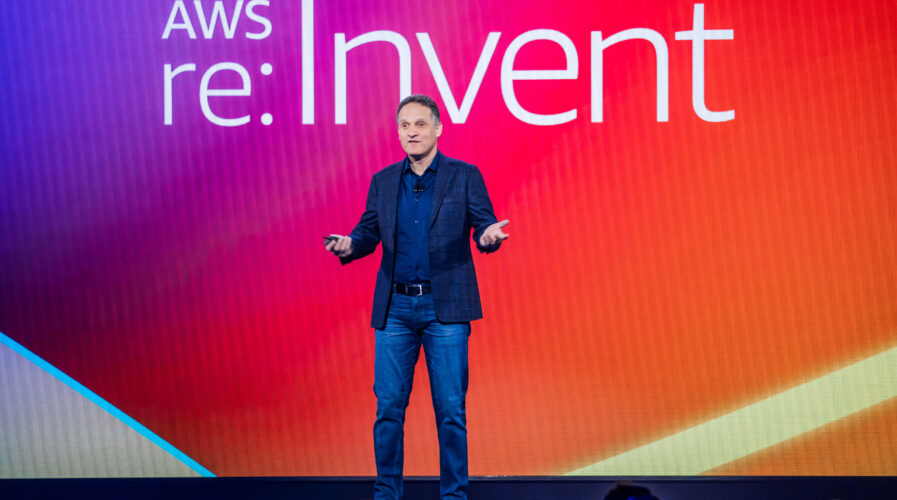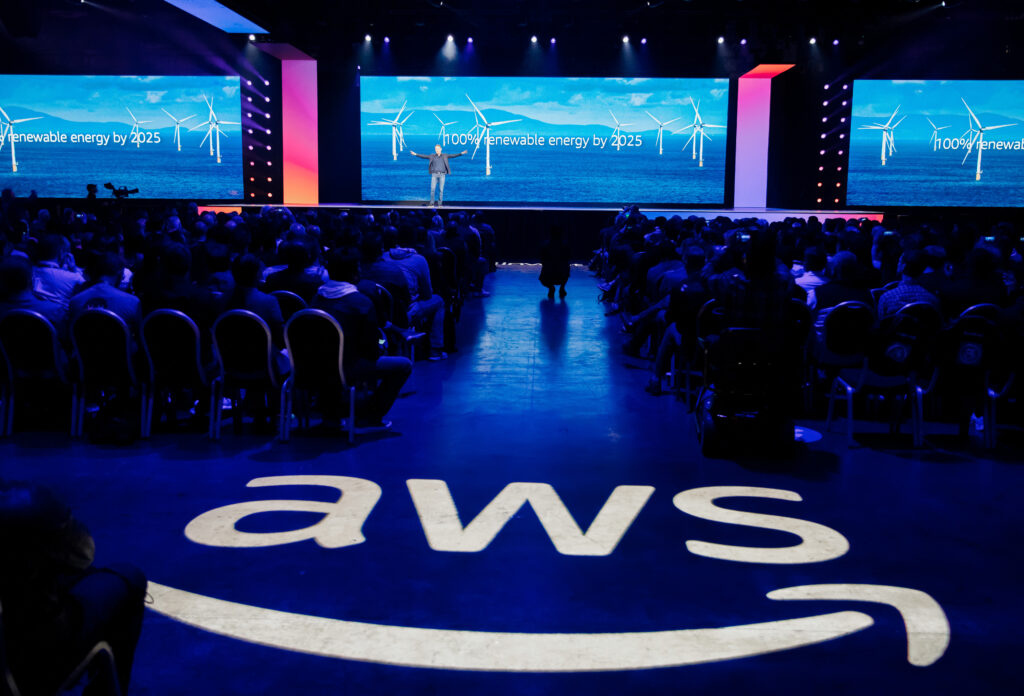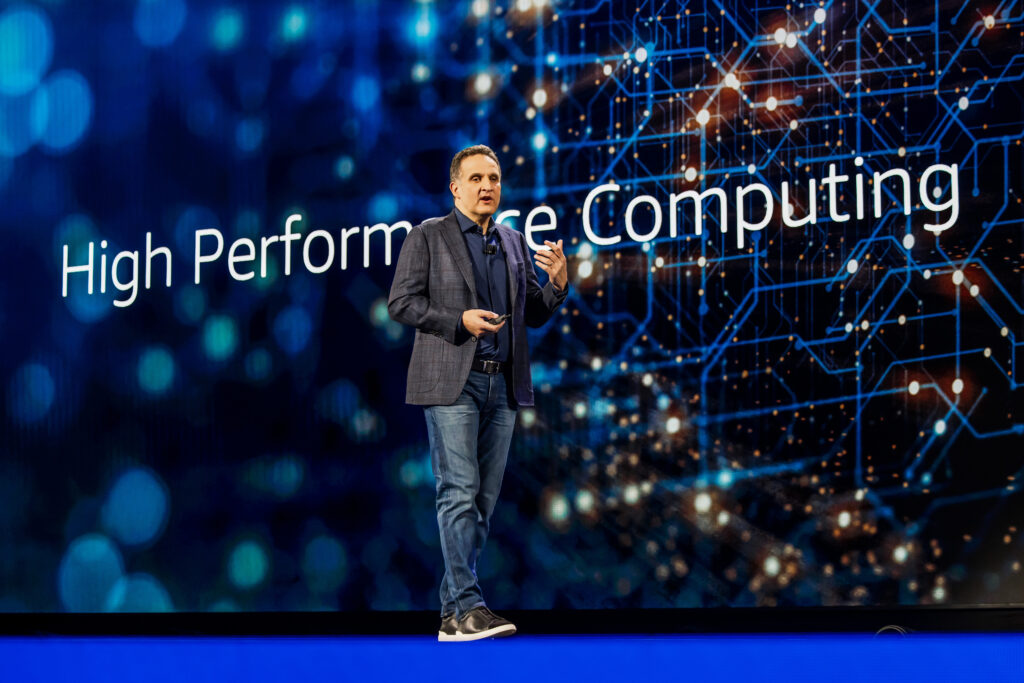
Adam Selipsky, Chief Executive Officer of Amazon Web Services (Source – AWS)
AWS re:Invent’s supply chain, data management and high performance computing
As one of the biggest and most anticipated tech conferences of the year, AWS re:Invent kick-started in Las Vegas with several huge announcements that are expected to revolutionize the post-pandemic world.
In his keynote address, Adam Selipsky, AWS CEO, shared how the tech giant is focusing on sustainability by pledging to return more water to communities that it uses in its cloud operations by 2030. AWS will be driving four key strategies in pursuit of becoming water+ by 2030: improving water efficiency, using sustainable water sources, returning water for community reuse, and supporting water replenishment projects.
“In just a few years half of the world’s population is projected to live in water-stressed areas, so to ensure all people have access to water, we all need to innovate new ways to help conserve and reuse this precious resource. While we are proud of the progress we have made, we know there is more we can do. We are committed to leading on water stewardship in our cloud operations and returning more water than we use in the communities where we operate. We know this is the right thing to do for the environment and our customers,” said Selipsky.
Apart from committing its pledge to nature, AWS also announced AWS Supply Chain, a new application that helps businesses increase supply chain visibility to make faster, more informed decisions that mitigate risks, lower costs, and improve customer experiences. By automatically combining and analyzing data across multiple supply chain systems, AWS Supply Chain enables businesses to observe their operations in real-time, find trends more quickly, and generate more accurate demand forecasts that ensure adequate inventory to meet customer expectations.
Based on nearly 30 years of Amazon.com logistics network experience, AWS Supply Chain improves supply chain resiliency by providing a unified data lake, machine learning-powered insights, recommended actions, and in-application collaboration capabilities.
“Customers tell us that the undifferentiated heavy lifting required in connecting data between different supply chain solutions has inhibited their ability to quickly see and respond to potential supply chain disruptions,” explained Diego Pantoja-Navajas, vice president of AWS Supply Chain.
“AWS Supply Chain aggregates this data and provides visual, interactive dashboards that provide the insights and recommendations customers need to take actions toward more resilient supply chains. And this is just the beginning—we will continue our investment in AWS Supply Chain to help our customers solve their toughest supply chain problems,” he added.
AWS Supply Chain is available in preview today in U.S. East (N. Virginia), U.S. West (Oregon), and Europe (Frankfurt), with availability in additional AWS Regions coming soon.

Adam Selipsky, Chief Executive Officer of Amazon Web Services. (Source – AWS)
As data continues to grow exponentially, managing and securing it is increasingly critical for organizations around the world. As such, AWS announced several new solutions and capabilities in data management and security for businesses. These include:
- Amazon DataZone – a new data management service that makes it faster and easier for customers to catalog, discover, share, and govern data stored across AWS, on-premises, and third-party sources. With Amazon DataZone, administrators and data stewards who oversee an organization’s data assets can manage and govern access to data using fine-grained controls to ensure it is accessed with the right level of privileges and in the right context.
- AWS Clean Rooms – a new analytics service that helps companies across industries easily and securely analyze and collaborate on their combined datasets— without sharing or revealing underlying data. With AWS Clean Rooms, customers can create a secure data clean room in minutes and collaborate with any other company in the AWS Cloud to generate unique insights about advertising campaigns, investment decisions, clinical research, and more.
- AWS SimSpace Weaver – a fully managed compute service that helps customers build, operate, and run large-scale spatial simulations. With AWS SimSpace Weaver, businesses can deploy spatial simulations to model dynamic systems with many data points (e.g., traffic patterns across an entire city, crowd flows in a venue, or factory-floor layouts), and then use the simulations to visualize physical spaces, perform immersive training, and garner insights on different scenarios to make informed decisions.
- Amazon Security Lake – a service that automatically centralizes an organization’s security data from cloud and on-premises sources into a purpose-built data lake in a customer’s AWS account so customers can act on security data faster. Amazon Security Lake manages data throughout its lifecycle with customizable data retention settings, converts incoming security data to the efficient Apache Parquet format, and conforms it to the Open Cybersecurity Schema Framework (OCSF) open standard to make it easier to automatically normalize security data from AWS and combine it with dozens of pre-integrated third-party enterprise security data sources.

Adam Selipsky, Chief Executive Officer of Amazon Web Services (Source – AWS)
AWS also announced three new Amazon Elastic Compute Cloud (Amazon EC2) instances powered by three new AWS-designed chips that can offer customers even greater computer performance at a lower cost for a broad range of workloads. Powered by new AWS Graviton3E chips, the Hpc7g instances offer up to 2x better floating-point performance compared to current generation C6gn instances and up to 20% higher performance compared to current generation Hpc6a instances, delivering the best price-performance for high-performance computing (HPC) workloads on AWS.
C7gn instances, featuring new AWS Nitro Cards, offer up to 2x the network bandwidth and up to 50% higher packet-processing-per-second performance compared to current generation networking-optimized instances, delivering the highest network bandwidth, the highest packet rate performance, and the best price-performance for network-intensive workloads.
Inf2 instances, powered by new AWS Inferentia2 chips, are purpose-built to run the largest deep learning models with up to 175 billion parameters and offer up to 4x the throughput and up to 10x lower latency compared to current-generation Inf1 instances, delivering the lowest latency at the lowest cost for machine learning (ML) inference on Amazon EC2.
READ MORE
- Ethical AI: The renewed importance of safeguarding data and customer privacy in Generative AI applications
- How Japan balances AI-driven opportunities with cybersecurity needs
- Deploying SASE: Benchmarking your approach
- Insurance everywhere all at once: the digital transformation of the APAC insurance industry
- Google parent Alphabet eyes HubSpot: A potential acquisition shaping the future of CRM


